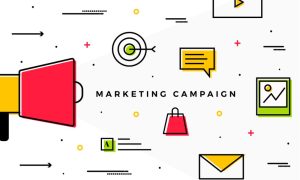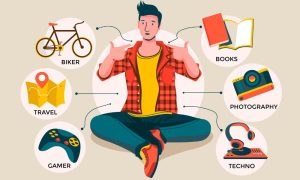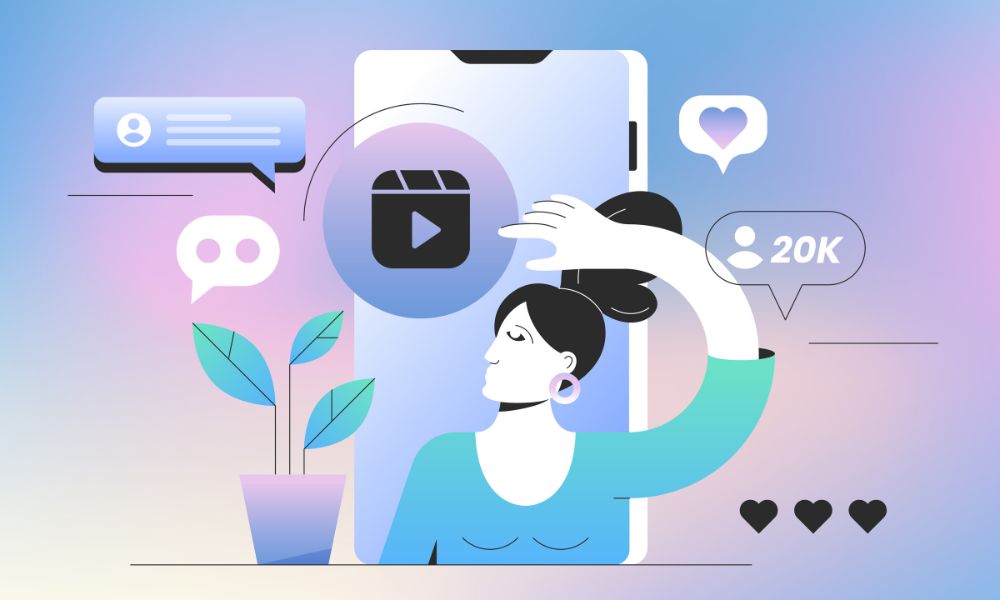
A growing number of faces on Instagram and TikTok look real at first glance, yet they don’t exist in the physical world. They smile, pose, post updates, and even interact with fans, but every image and caption is generated by artificial intelligence.
AI influencers have moved from niche experiments to mainstream players in social media. They partner with global brands, build their own audiences, and spark debates about authenticity, creativity, and ethics. For marketers and creators alike, understanding who they are and how they work is no longer optional.
In this guide, we’ll explore what AI influencers are, how they’re created, examples of the most popular ones, and what their rise means for the future of influencer marketing.
Beyond the Hype: What an AI Influencer Really Is
AI influencers are often talked about as futuristic novelties, but in practice, they’re more structured and intentional than most people realize. They aren’t simply AI-generated faces dropped onto social feeds, they are carefully designed digital personas, complete with personalities, storylines, and strategies that make them function much like human creators.
More Than Just a Pretty AI Face
At the core, an AI influencer is a digital character built to act like a human creator. They aren’t just random images pushed out by software. Instead, they have a consistent personality, a backstory, and content themes that make them feel relatable. Some are styled as fashion icons, others as gamers or lifestyle vloggers, but all are powered by a combination of AI tools that generate visuals, captions, and even voices.
The Real Work Behind the Illusion
While the visuals and text are created with AI, the bigger picture is shaped by humans. A team, sometimes a brand, sometimes independent creators, decides on the influencer’s persona, niche, and strategy. They script the storylines, guide the interactions, and manage the campaigns. In other words, the AI handles the output, but the vision comes from people who know how to tell a story and connect with an audience.
How They Differ from Human Influencers
AI influencers and human influencers often fill the same marketing roles, but they operate differently:
- Control: AI characters never miss deadlines or change direction unexpectedly. Everything they post can be carefully planned.
- Scalability: A virtual persona can create content around the clock, in any language, and across multiple platforms at once.
- Consistency: Their look, tone, and style never drift. Audiences see a steady identity that feels reliable.
These qualities make AI influencers appealing to brands, but they also raise questions about authenticity and whether audiences can build genuine trust with someone who doesn’t exist.
The History and Rise of AI Influencers
The story of AI influencers didn’t happen overnight. From experimental CGI characters to today’s hyper-realistic digital personas, their rise reflects both advances in technology and the changing way audiences connect with creators.
Early Pioneers: Lil Miquela, Shudu, Imma
The idea of virtual influencers first gained traction in the late 2010s.
Lil Miquela, a CGI character launched in 2016, became one of the first to gain global attention, amassing millions of followers on Instagram.
Around the same time, Shudu, presented as the “world’s first digital supermodel,” sparked both fascination and debate about the role of virtual characters in fashion.
In Japan, Imma emerged with a distinct pink bob haircut and a lifestyle-driven feed that blended art, culture, and fashion. These early pioneers showed that digital personas could attract real engagement, brand deals, and loyal fan communities.
Milestones in Popularity – Brand Partnerships and Viral Campaigns
As these virtual characters grew their audiences, brands began experimenting with them in campaigns. Lil Miquela worked with Prada, Samsung, and Calvin Klein. Shudu modeled luxury fashion lines. Imma collaborated with IKEA Japan in a campaign that placed her inside a real apartment. These partnerships blurred the lines between digital and physical marketing, proving that audiences were willing to engage with influencers who didn’t exist in the traditional sense. Viral campaigns, especially those that leaned into the novelty of AI-driven personalities, pushed the concept further into mainstream conversation.
The 2020s Boom: AI Tools Making Influencer Creation More Accessible
What once required expensive CGI studios and large creative teams is now more accessible thanks to AI. Tools for image generation, video animation, and voice synthesis have lowered the barrier to entry, making it possible for smaller teams, even individual creators, to experiment with AI influencers.
By the early 2020s, hyper-realistic characters like Aitana López, a Spanish AI influencer with hundreds of thousands of followers, signaled a shift from niche art projects to scalable business ventures. The combination of affordability, accessibility, and growing audience acceptance has fueled a rapid expansion of AI influencers across industries and platforms.
Timeline of AI Influencers:
| Year | AI Influencer / Event | Milestone |
| 2016 | Lil Miquela | Launched on Instagram, quickly gained attention as one of the first virtual influencers. |
| 2017 | Shudu | Introduced as the “world’s first digital supermodel,” sparking debate in the fashion world. |
| 2018 | Imma | Emerged in Japan with a distinctive style, blending culture and fashion. |
| 2019 | Brand campaigns | Major collaborations: Lil Miquela with Prada and Calvin Klein, Imma with IKEA Japan. |
| 2020–2022 | Wider adoption | Virtual influencers featured in global marketing campaigns; brands test novelty appeal. |
| 2023+ | Aitana López and new wave | Hyper-realistic AI influencers rise, supported by accessible AI tools for image, video, and voice. |
The Technology Behind the Curtain: How AI Influencers Are Built
Behind every AI influencer is a blend of storytelling and technology. While the character may look effortless on social media, building one requires a clear plan, creative direction, and the right set of tools.
1) Crafting the Persona: Niche, Backstory, and Brand Identity
The process begins with deciding who the influencer is meant to be. What niche do they occupy: fashion, gaming, lifestyle, or something else? What values do they represent? A backstory and brand identity make the persona more believable. Just like a human creator, they need a consistent personality that guides the tone of captions, the style of visuals, and the types of collaborations they pursue.
2) Visual Creation: CGI, AI Image Generators, Avatar Design
In the early days, creating visuals for a digital influencer meant working with CGI teams and 3D modeling. Today, AI image generators like Stable Diffusion, Midjourney, and DALL·E allow creators to produce high-quality visuals with far less effort. Many projects combine these with avatar design tools to build a library of expressions, poses, and outfits. The goal is consistency: audiences should be able to recognize the influencer instantly across posts.
3) Voice and Video: Synthetic Voices, Animation, and Motion Tools
Static visuals establish identity, but voice and movement make the character feel alive. Platforms like ElevenLabs generate realistic synthetic voices that can be tailored to match an influencer’s personality. Animation and motion tools add gestures, lip-sync, and body language. These elements are especially important for short-form video on TikTok, Instagram Reels, or YouTube Shorts, where dynamic presence drives engagement.
4) The Content Engine: AI Text Generators for Captions and Engagement
No influencer succeeds on visuals alone. Captions, comments, and messages build the sense of connection. Large language models (LLMs) such as ChatGPT or Claude are often used to script captions, replies, and even short storylines. By referencing a persona guide or “character bible,” these tools can keep the tone consistent. Done well, the text makes the influencer feel more like a voice audiences want to hear from, not just an image in their feed.
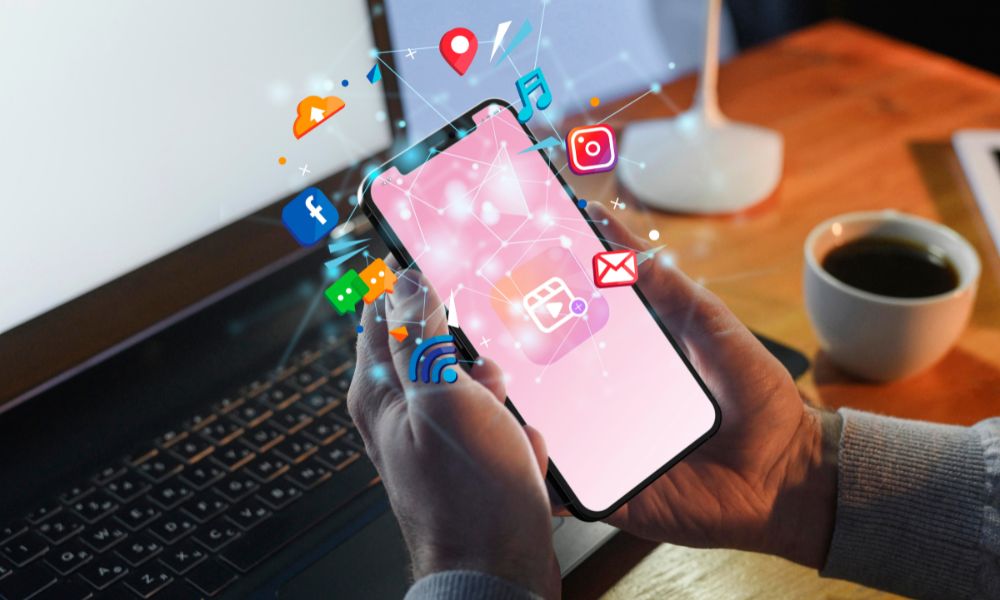
Why Brands Use AI Influencers
For marketers, AI influencers offer something human creators cannot always guarantee: full creative control and consistency. They are designed to match brand goals and can scale output without the unpredictability of real-life schedules or personalities. Still, the appeal goes beyond convenience.
- Consistency and Control – No Scheduling Conflicts or Reputation Risks. AI influencers are available 24/7. They don’t cancel shoots, change their public image overnight, or risk scandals that could damage a brand partnership. Every post, caption, and collaboration is curated to stay on-message.
- Cost Efficiency – Can Scale Content Faster. While creating a realistic AI influencer requires an initial investment, once the foundation is built, content can be scaled quickly. A single persona can appear in multiple campaigns, languages, and formats without additional photoshoots or travel costs. For brands running global campaigns, this efficiency is hard to ignore.
- Novelty and Virality – Audiences Are Curious. The very fact that AI influencers are not human draws attention. Followers are intrigued by the mix of realism and artificiality, often sparking viral conversations. This novelty gives brands an edge in crowded feeds where standing out is increasingly difficult.
- Targeted Storytelling – Influencers Can Be Built for a Niche. Unlike human creators, who come with their own preferences and limitations, AI influencers can be designed for a very specific niche. A brand could launch a persona focused entirely on sustainable fashion, esports, or wellness, tailoring every aspect of appearance and personality to resonate with that community.
The Limitations: Authenticity, Relatability, and Technical Barriers
Despite the advantages, AI influencers face clear challenges. Some audiences question their authenticity, finding it harder to build genuine trust with a character who doesn’t exist. Relatability can also be limited, as AI personas don’t share lived experiences like travel mishaps or personal struggles.
On the technical side, maintaining visual and tonal consistency requires skill, and poorly executed content risks falling into the “uncanny valley.” These factors mean AI influencers are powerful tools, but not replacements for human creators.
The Controversies and Criticisms About AI Influencers
The rise of AI influencers is not without significant debate. While they offer new creative and commercial possibilities, they also raise important questions about authenticity, ethics, and the future of digital media. Understanding these criticisms is essential for anyone engaging with this technology, whether as a creator, a brand, or a consumer.
Authenticity Debate – Can Followers Trust AI Personas?
At the heart of the criticism lies a fundamental question of trust. Human influencers build followings through shared experiences and perceived genuineness. AI influencers, however, are curated constructs. Every opinion, personal story, and reaction is designed or generated.
This creates a paradox. Followers may develop genuine emotional connections with these personas, but the relationships are inherently one-sided and manufactured. The debate centers on whether it is ethical to foster such connections without explicit disclosure. When an AI persona shares a “personal struggle,” is it inspirational storytelling or a manipulative ploy? The lack of a real consciousness behind the content challenges traditional notions of authenticity in social media.
Ethical Concerns: Disclosure, Manipulation, and Audience Transparency
The power of AI influencers brings substantial ethical responsibilities, particularly concerning transparency.
Disclosure: There is no universal legal requirement for AI influencers to disclose their non-human nature. This leads to situations where audiences invest time, emotion, and money into a relationship without knowing the true nature of the entity they are engaging with. Many argue for clear and consistent labeling, similar to sponsored content disclosures.
Manipulation: These personas can be designed to perfection, free from human flaws. This can set unrealistic standards for beauty, lifestyle, and success, potentially exacerbating issues related to self-image and social comparison among followers. Furthermore, they could be used to spread misinformation with a convincing, attractive face, making it difficult to distinguish between human and automated propaganda.
Copyright and Ownership: Who Owns AI-Generated Likenesses?
The legal landscape surrounding AI-generated content is complex and largely unsettled. Key questions remain unanswered.
- If an AI generates an image of an influencer, who owns the copyright? Is it the user who wrote the prompt, the company that built the AI model, or is the image not copyrightable at all because it lacks human authorship?
- If a brand uses an AI influencer for a campaign, who owns the rights to that character’s likeness? Can the creator license the same persona to a competitor?
- What happens if an AI model generates a face that closely resembles a real person without their consent?
These questions of intellectual property and likeness rights present significant risks for brands and creators until clearer regulations are established.
Human vs AI Jobs – Impact on Real Creators
A primary concern within the creative industry is displacement. As brands allocate budgets to AI influencers, what happens to the human models, photographers, makeup artists, and influencers who traditionally filled these roles?
AI influencers offer a cost-effective, always-available alternative. They do not require physical photoshoots, travel, or negotiating contracts. While they create new jobs in AI prompt engineering and digital asset management, they potentially displace traditional creative jobs.
This shift forces the industry to adapt and raises questions about the value of human creativity in a market increasingly interested in automated, scalable alternatives. The long-term impact on the creative economy is a central point of contention in the adoption of this technology.
The Future of AI Influencers
AI influencers are still evolving, and the next few years will determine how deeply they integrate into marketing, entertainment, and everyday social media. Several trends are already shaping what’s next.
1. Hybrid Collaborations: AI + Human Creators Working Together
Rather than replacing human creators, AI influencers are increasingly seen as partners. Campaigns that pair digital characters with real influencers or celebrities create a balance of novelty and authenticity. These collaborations also help audiences accept AI personas as creative extensions rather than competitors.
2. Growth of Hyper-Realistic Models – Indistinguishable from Real Humans
Advances in image generation and animation mean some AI influencers are becoming nearly indistinguishable from real people. Hyper-realistic skin textures, natural movement, and synthetic voices blur the line even further. While this realism makes them more engaging, it also raises questions about disclosure and the need for clearer labeling.
3. Regulation and Standards – Transparency Guidelines for Brands
As AI influencers become mainstream, regulation is likely to follow. Transparency guidelines may require brands to disclose when an influencer is AI-generated, much like rules already exist for sponsored posts. Standardized practices would help audiences understand what they’re engaging with while building long-term trust.
4. AI Influencers in the Metaverse and Virtual Commerce – Integration with AR/VR
The rise of AR, VR, and metaverse platforms could give AI influencers entirely new spaces to thrive. Imagine meeting an AI influencer at a virtual event, shopping with them in a digital store, or seeing them appear as guides inside immersive experiences. Their role may expand beyond social media feeds into interactive commerce and entertainment.
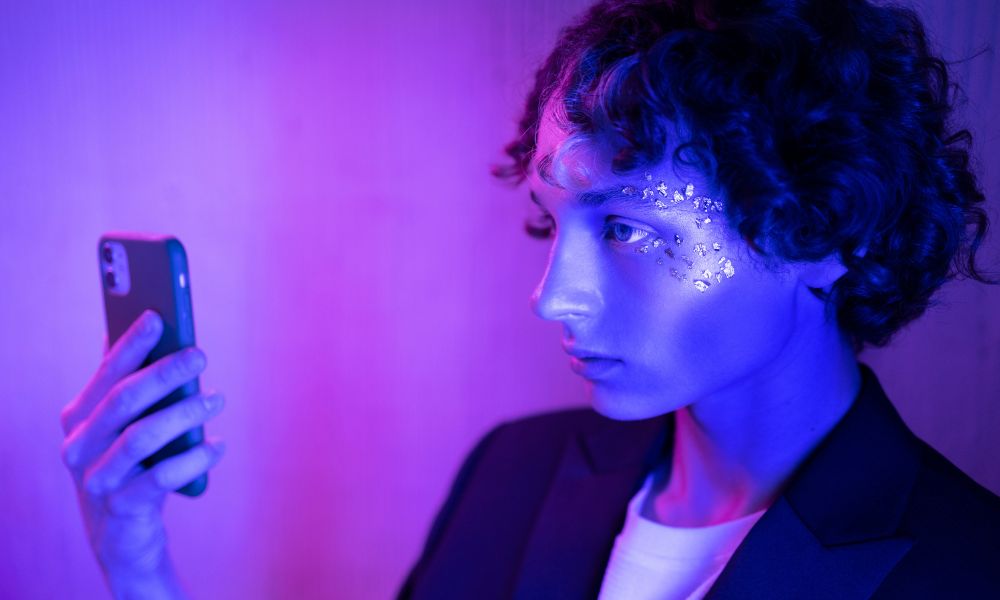
Conclusion: AI Influencers as the New Face of Digital Marketing
AI influencers are no longer just experiments, they are active participants in the creator economy. From fashion campaigns to lifestyle content, they’ve shown that digital characters can attract audiences, secure brand partnerships, and spark conversations around authenticity and innovation.
For marketers, they represent both opportunity and responsibility. On one hand, AI influencers offer unmatched control, scalability, and creativity. On the other, they challenge long-standing ideas about trust, transparency, and the human connection at the heart of social media.
The path forward will likely blend both worlds. Human creators will continue to thrive, while AI influencers grow as complementary voices that expand what’s possible in digital storytelling. Brands and creators who approach this space with creativity and honesty will be best positioned to make the most of it.
AI influencers are here to stay. The question now is not whether they belong in digital marketing, but how you choose to work with them.
Find the Right Influencers Faster
Building or collaborating with digital personas starts with discovery. With the Hypefy Influencer Discovery Tool, you can search and filter influencers by niche, engagement rate, and audience fit, and no spreadsheets are needed.
Scale Your Influencer Strategy with Expert Support
Whether you’re curious about AI-driven campaigns or want to maximize results with human creators, the Hypefy Influencer Marketing Agency helps you design, manage, and optimize influencer programs from start to finish.

